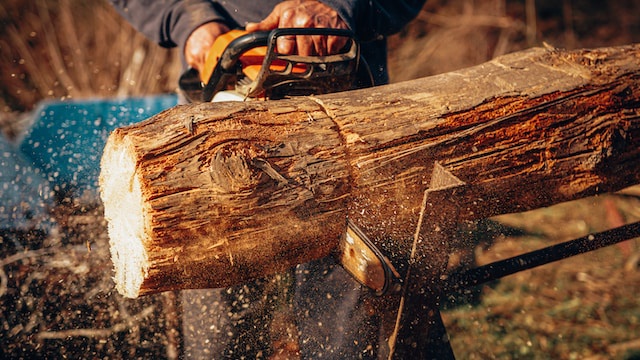For professional arborists tasked with scaling towering trees to perform rigging, pruning, and removals, having the ideal specialized chainsaw is imperative. The saw must deliver robust cutting power in a nimble, ergonomic package able to withstand daily treetop use.
When selecting the perfect chainsaw for arboriculture work, here are the key features and capabilities to prioritize:
Compact Top-Handle Design
Best arborist chainsaw utilize a compact top handle configuration directly behind the cutter bar. This provides:
- Enhanced directional control during cutting
- Quicker reaction and kickback resistance
- Better weight distribution for climbing
- Ergonomic grip options like overhand and palms cupped
Top handles allow treetop sawing not possible with standard rear handle saws.
Durability and Weather Resistance
Professional models feature metal drive covers and reinforced components to withstand harsh daily use. Forged crankshafts, sealed bearings, anti-vibration mounts, and water-resistant components hold up during intense climbing conditions.
Power-to-Weight Ratio
Look for the highest power output with lowest possible weight. Top handle saws range from 30cc-50cc displacement providing robust cut strength under 15 pounds.
Powerful 3+ HP allows fast limbing while lightweight prevents undue climbing fatigue.
Reliable Starting
Difficulty starting a chainsaw aloft creates hazards. Many arborist saws feature decompression valves for easier pull starts and heated carburetors to prevent icing.
Low-Kickback Chains and Bars
All arborist chainsaws should utilize specialized low-kickback cutting systems with reduced kickback tips, depth gauges, and narrow radius noses to enhance treetop safety.
Battery Compatibility and Life
For the best electric chainsaw models, ensure the saw accommodates high capacity lithium-ion battery packs with sufficient run times between charges. Bring extra charged batteries aloft.
Integrated Lanyard Ring
A secure tie-off point for attaching the saw to a climbing harness via lanyard improves safety when hands must be free for climbing.
FAQ
What cutting tasks do arborist chainsaws handle best?
Precision branch removal, limb trimming, aerial pruning, sectional dismantling of trees, and preparing trunks for rigging.
Are top handle or rear handle saws better for ground use?
Rear handle models allow greater leverage and control when bucking logs and stumps from below.
What protective equipment should arborists use alongside chainsaws?
Pants with built-in chaps protection, steel-toe boots, hard hat, face shield, ear protection, and cut-resistant gloves.
How should chainsaws be transported up trees?
Smaller saws can climb attached to the arborist's harness. For larger saws, use a separate climbing line and pulley system for hauling.
How often does an arborist chainsaw require sharpening?
Inspect and sharpen chains before each use. Intensive commercial use may require daily sharpening to maintain performance.
Conclusion
Selecting just the right professional-grade arborist chainsaw ensures tree climbers stay safe, comfortable, and highly productive aloft. Prioritize a lightweight but powerful top-handle saw with extensive durability enhancements and ergonomic handling. While a major investment, the ideal arborist chainsaw is an indispensable tool of the trade able to withstand rigorous daily use scaling tall trees. Matching features to intended climbing applications helps ensure years of reliable service.


No comments yet